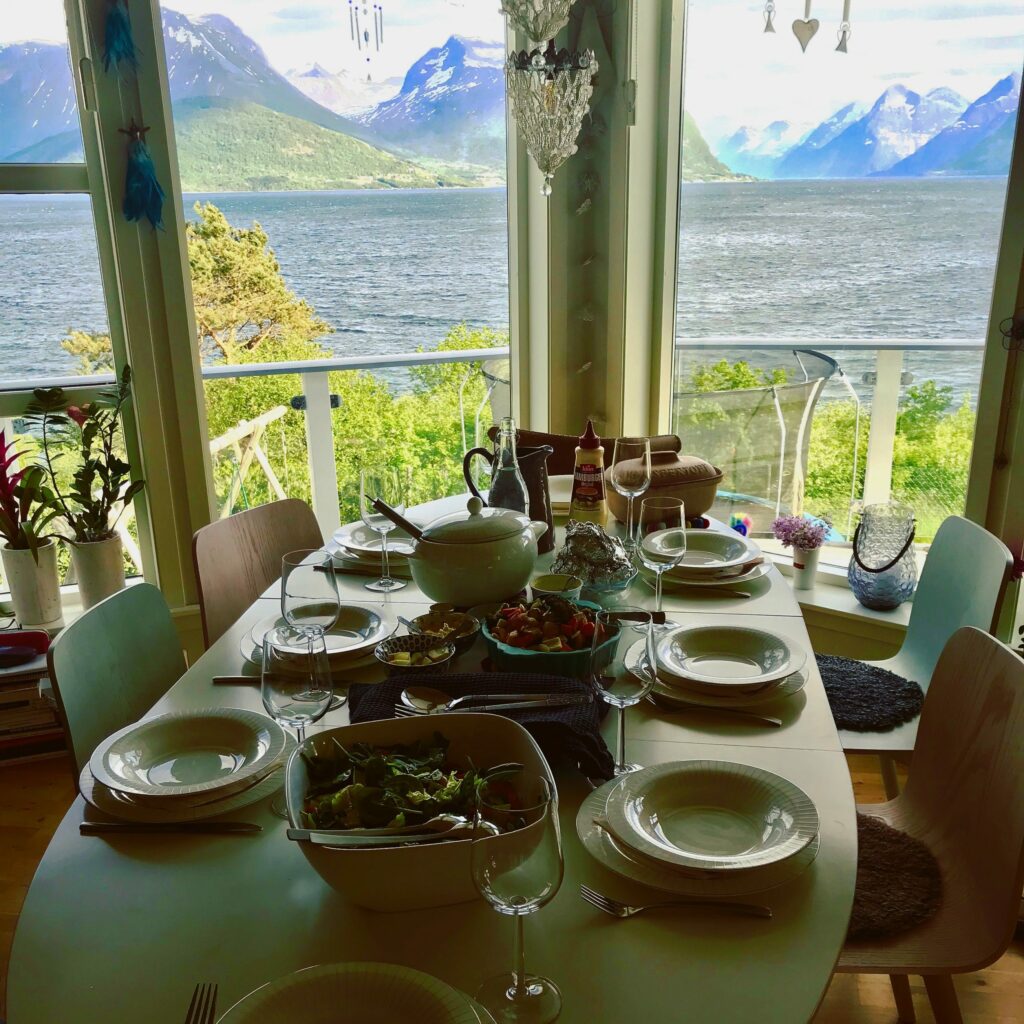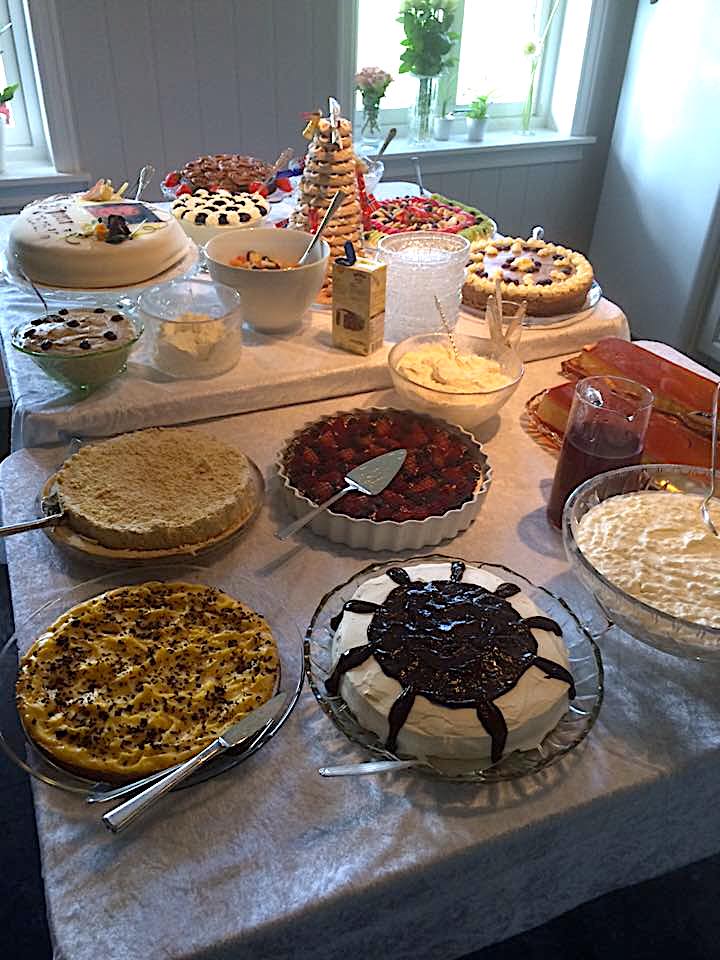This post is sure to be the first of many parts where I dive into Norwegian food culture, and what makes it different, special and unique. Having lived in multiple countries, I am fascinated with both differences and similarities among countries, which is what inspired me to write a few words on this topic.

When I graduated high school at the age of 18, I decided to move to Rome for a year to learn Italian and experience another country. I had no prior experience with Italy or the language (in fact I had never visited) but merely went on my intuition as I had always been drawn to southern European cultures.
One of the big differences I immediately noticed between Norway and Italy was how lengthy the daily dinners were and how late people gathered at the table, compared to the Nordic cultures.
When I grew up, we used to eat between 4:30-5 pm, while many times in Italy we wouldn’t sit down until about 9 pm. In Norway, many times it seems as if people are only eating because they need to, while in Italy dinners were always four courses (salad, pasta, main course, and dessert) and lasts for hours.
People discuss food for hours, something else I wasn’t used to. And there was always wine. That’s when I knew I had landed in the right place. Rome is where my obsession with food, wine, and cookbooks began. I got my first cookbook “La Cucina Italiana” there and devoured every page.
Almost 30 years later, I now can say my career has included titles such as professional chef, food blogger, and wine consultant, and my cookbook collection now exceeds 3,000 titles.
But I digress. Ever since I started this blog about Norwegian food, culture, tradition, and food history, I’ve discovered that my earlier beliefs about Norwegian food traditions weren’t quite true. I know of no other people who put more pride and effort into their dining tables, decorations, and ceremonies like the Norwegians when they’re hosting dinners and have people over.
While our tables might not be as overcrowded with a selection of fresh, colorful and sophisticated dishes such as other cultures, we understand that coming together for meals is not just about the food. It’s about being together, catching up, and enjoying each other’s company.

“Maten er halve føda”, is an old Norwegian saying that translates to “the food is half of our nourishment”.
Meaning that while food is a necessary nutrient to survive, the other half is just as important; namely being in the company of others and enjoying friends and family. It’s a big part of our distinctive culture.
First, we eat breakfast, before we start our daily chores, whether it’s in the home, at school or at work. Then it’s lunch, which is a similar meal to breakfast, and a chance for us to break up the workday, meet with colleagues and be social. Dinner is when the entire family is gathered, and a time for exchanging experiences in our day.
This way, meals aren’t just about getting nourished nutritionally. It’s a valuable time to gather and share something more than food. Conversations usually run more freely around a table. Sharing a meal provides a sense of safety and wellbeing. A lot can be achieved by initiating big and difficult discussions around a great meal.

Much of the difference between northern and southern European culture is based on eating out. While Italians, Spanish and Greek people frequent restaurants several times a week, Norwegians’ thoughts are: Why go out when you have food at home?
We put a lot of effort into making our homes cozy, decorating, spending money on furniture, lighting, serving, and dinnerware.
There is another aspect of entertaining at home: Not only do you get to enjoy the comfort and “koselig” (Norwegians’ version of the Danish “hygge”) atmosphere of someone’s house, there is enjoyment and satisfaction in serving food that has been homemade.

Think Norwegians don’t value food as much as other cultures?
Try visiting someone’s home. Chances are, no matter what time of day it is, the host will put on a pot of coffee, miraculously pull out cookies, cakes, lefse, open-face sandwiches, and other snacks, and all of a sudden you are at the smorgasbord of your dreams.
In fact, in the old days, it was common to serve cookies and wine to guests, and people would have elaborate glass and crystal serve ware for this usage in particular.
There used to be, and still is to some degree, a difference between what is served during the weekdays and the weekend. Weekends we tend to get a bit more decadent when it’s time for extra “kos” and time with family and friends.
Additionally, because of seasons, we also will enjoy certain dishes at certain times of the year. Potato salad tastes best with charcuterie (vegan for me now!) in the summer, while “brennsnut”, a type of brothy stew, is typically served up in the fall and winter.
Our traditions and habits are most strongly visible and experience during holidays such as Christmas, Easter and May 17th.

I have a lot more to share on the topic of Norwegian food traditions.
But the most important message I wanted to communicate with this post is that what I thought and said in my younger years about Norwegians not having a food culture as rich as our more southerly neighbors is most definitely not true.
Quite the opposite. It just looks and tastes a bit different.
Guess that’s why I love it so much.




0 Comments